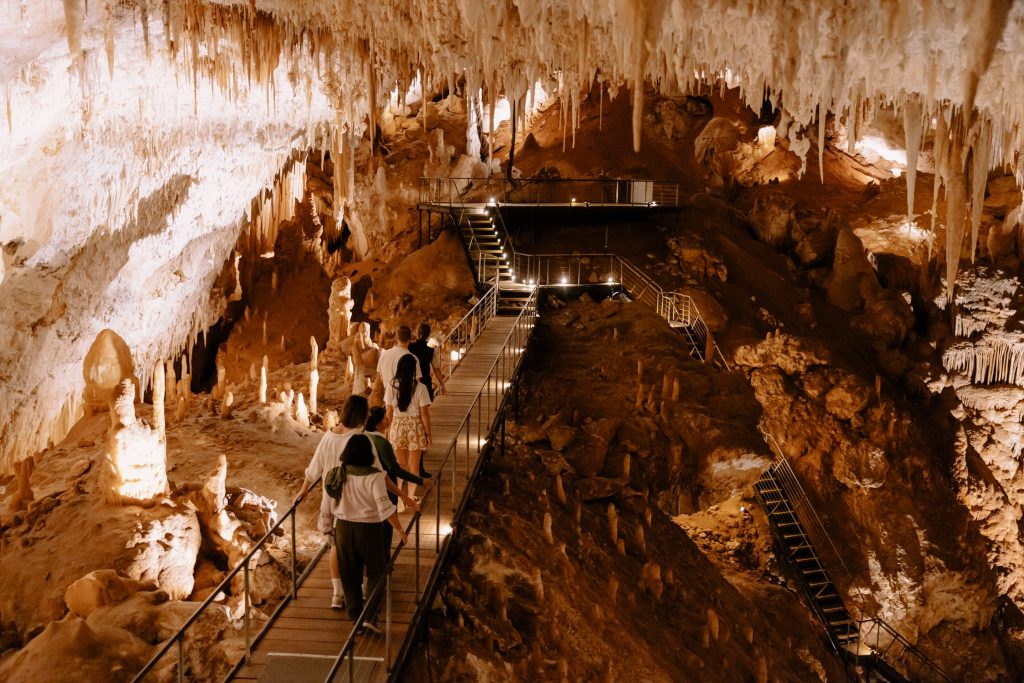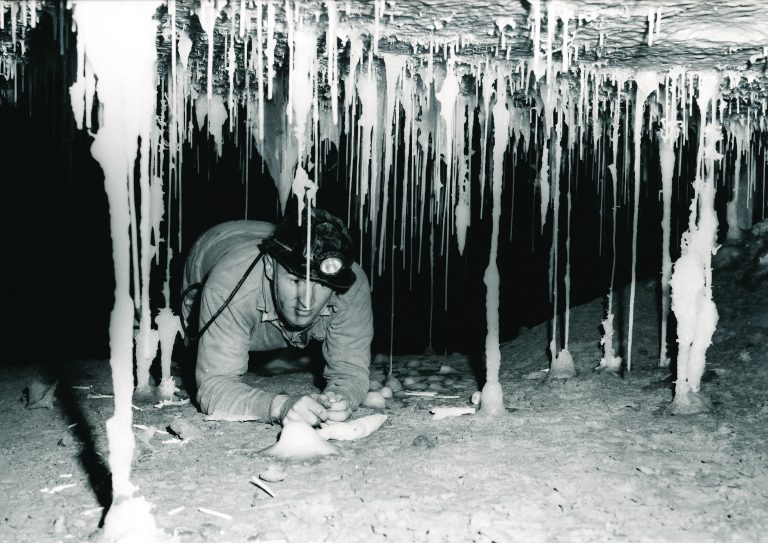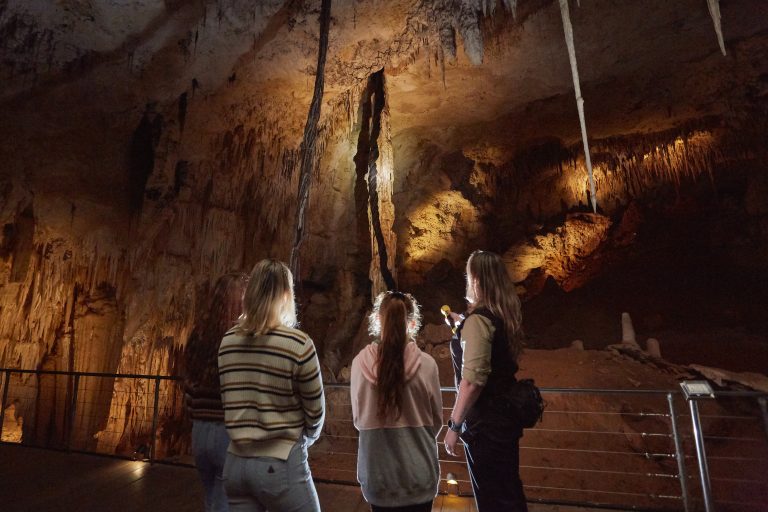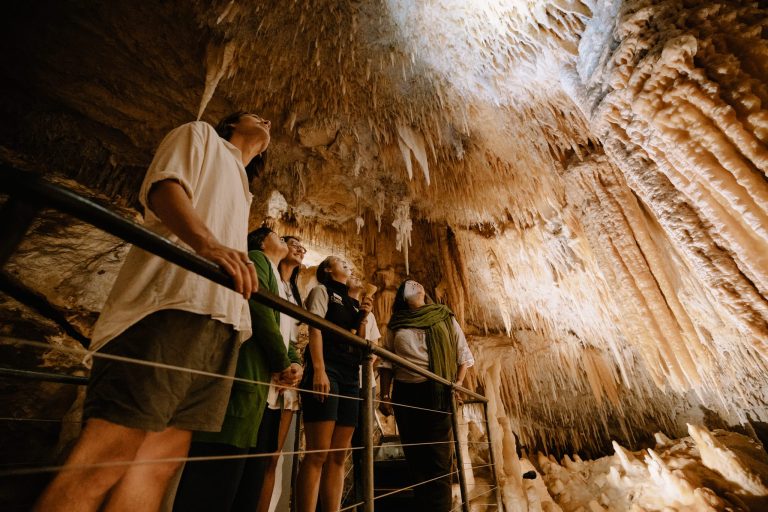Upon entering the cave, you are greeted by a vast chamber, where tree roots from the surface—mostly karri and marri trees—spiral down, searching for moisture deep within.
These roots, which extend through the cave’s ceiling, offer a fascinating glimpse of nature’s persistence.
Jewel Cave is a wonderland of spectacular calcite formations, with delicate straws, shimmering helectites, and massive stalagmites that seem frozen in time.
Among its treasures is one of the longest straw stalactites in Australia, an impressive 5.43 meters long. These hollow, tubular stalactites grow as water droplets pass through them, creating a natural work of art whose size is determined by the droplets themselves.
The cave also boasts incredible formations like the towering stalagmite known as ‘The Karri Forest,’ glittering cave coral, pendulites, and stunning flowstone structures such as ‘The Frozen Waterfall’ and ‘The Organ Pipes.’
And if you peer into the Jewel Casket, you’ll spot the remains of a Brush-Tailed Possum, whose bones have been carefully dated to between 400 and 500 years old. The possum’s presence adds an eerie touch of history to this already magical underground world.







